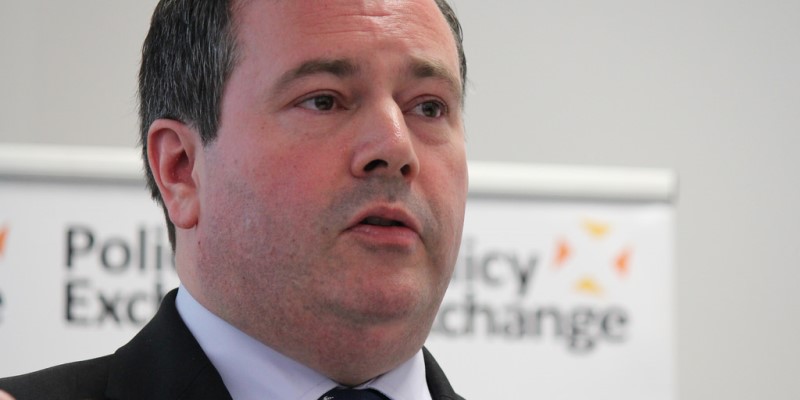Alberta’s blue-ribbon panel should recommend spending reform

Premier Jason Kenney’s newly-elected government in Alberta recently commissioned a blue-ribbon panel, chaired by former Saskatchewan finance minister Janice MacKinnon, aimed at addressing Alberta’s fiscal woes. This year, the government posted a $6.7 billion deficit and the province is on track to go from zero net debt (all debt minus financial assets) in 2015/16 to more than $50 billion by 2021/22. The commission’s job is to provide recommendations to repair Alberta’s broken finances.
As we await the findings of the report, it’s useful to consider how the problem emerged in the first place. While there’s no doubt the recent downturn in oil prices and subsequent recession reduced government revenues and hurt the government’s bottom line, Alberta has run chronic deficits simply because spending has outstripped revenue over a long period of time. Since spending is at the root of Alberta’s fiscal challenge, the solution is to strike at its root by reforming and reducing provincial government spending.
Consider this. Between 2004/05 and 2014/15, government program spending in Alberta (all spending other than debt-service payments) increased by nearly 100 per cent—twice what would have been necessary to offset cost pressures from population growth and inflation.
As a result, the province started bleeding red ink long before the most recent recession hit. In fact, aside from one balanced budget during a brief period of spending restraint under Jim Prentice, Alberta has run deficits every year since 2009/10 including several years when energy prices were high.
So much for the idea that low oil prices alone explain Alberta’s fiscal train wreck.
Although successive Progressive Conservative governments got the ball rolling to create this problem, the NDP government elected in 2014 under Rachel Notley failed to address the problem during its time in office, continuing to increase spending even in the face of large budget deficits. In short, multiple Alberta governments failed to exercise spending discipline in both good times and bad, and so the province’s debt grew and grew.
It's important to understand that without all this government spending in previous years, Alberta’s fiscal position today would be very different. For example, if the government had held program spending growth to the rate of inflation-plus-population between 2004/05 and 2014/15, the government’s finances would have been much better positioned to withstand the recession of 2014. In fact, the government would have (under this scenario) run surpluses every year instead of deficits. And the run-up in debt simply would not have occurred.
And make no mistake, increasing debt is already hurting Alberta taxpayers. Just a few years ago, in 2007/08, government interest payments on debt were $61 per person. That figure is expected to increase tenfold, to $655 by 2020/21. All this extra spending on debt servicing means less money for other priorities such as health care, education and/or tax relief.
So what can be done now?
Again, since spending is at the root of Alberta’s fiscal problems, the government should focus its efforts on spending reform. Per person government spending in Alberta is now substantially higher than in neighbouring British Columbia, and there’s good evidence that government workers in Alberta enjoy a pay premium of 9.6 per cent compared to similarly skilled and educated workers in the private sector. Shrinking both these gaps over time will help the government end the debt binge of recent years.
The provincial government’s blue-ribbon commission could be an important step in repairing Alberta’s unsustainable finances. Hopefully the report provides some guidance on how to restore fiscal discipline by bringing program spending back in line with revenue.
Author:
Subscribe to the Fraser Institute
Get the latest news from the Fraser Institute on the latest research studies, news and events.

